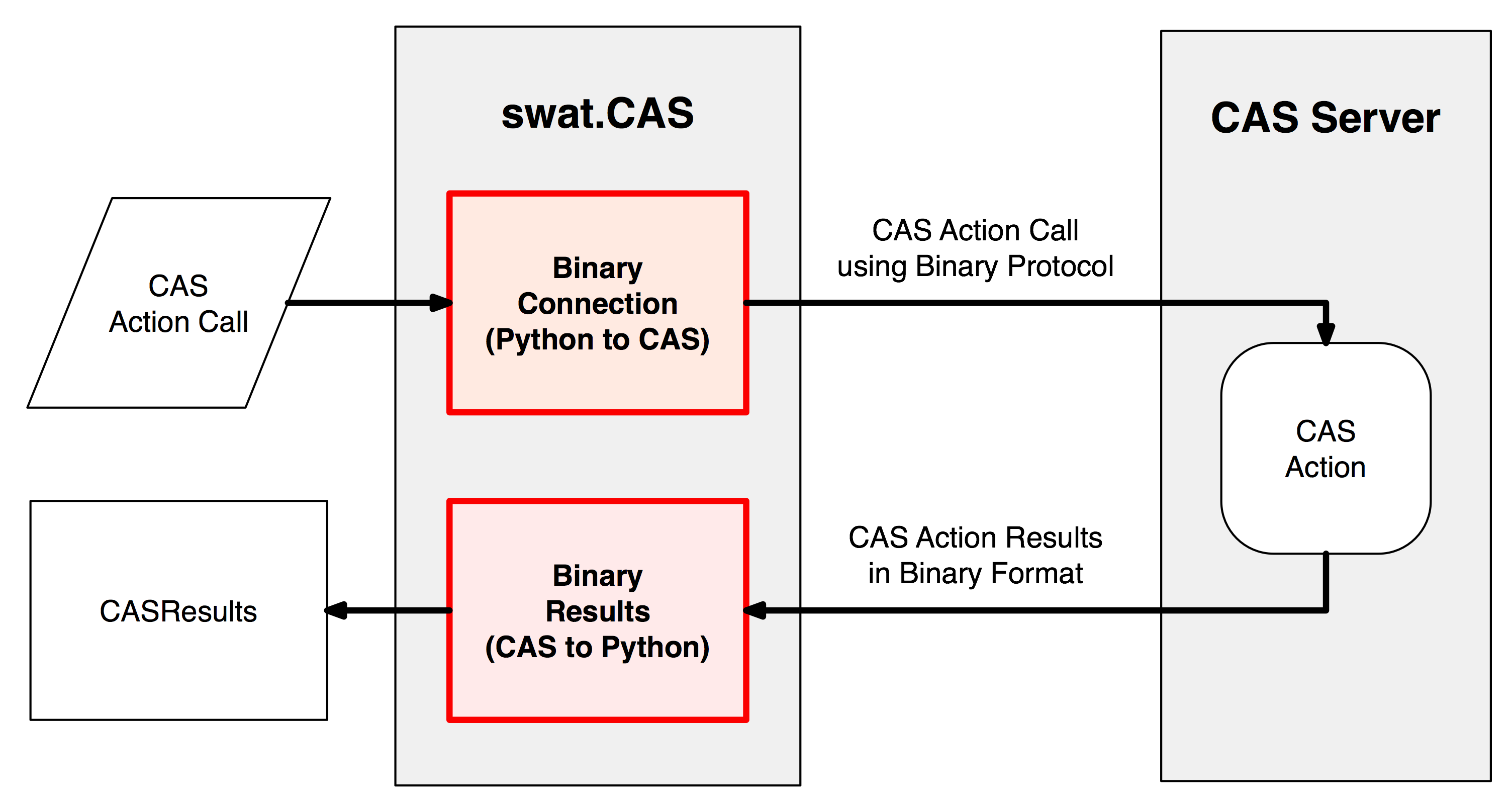Binary vs. REST
As we have mentioned in other sections of documentation on SWAT, there are two methods of connecting to CAS: binary and REST. The binary protocol is implemented in the SAS TK subsystem which is bundled as part of the SWAT installation (on platforms where it is supported). This protocol packs all data as efficient binary transmissions.
The REST interface, on the other hand, uses standard HTTP or HTTPS communication. All requests and responses are done using HTTP mechanisms and JSON data. This interface does not require any extra Python extension modules or the SAS TK subsystem; it is all done in pure Python. This does have the advantage of being more open, but a performance penalty is incurred because of the extra layer of JSON processing.
The pros and cons of each interface are discussed more below.
Binary (CAS) Protocol
The diagram below shows the overall process for a CAS action request from invoking the action to getting the results back. The places where conversion from one data format to another occurs is highlighted in red. As you can see, the only conversions that take place are in the client-side to convert Python objects to and from binary CAS constructs. All of these conversions are done in a Python extension written in C in order to make them as fast and efficient as possible.

The default protocol for connecting to CAS is the binary form, but the SWAT client does try to auto-detect the type by sending test packets over of different types to see which one succeeds. You can specify the binary communication specifically by using protocol="cas" in the connection constructor.
In [1]: conn = swat.CAS(cashost, casport, protocol='cas')
The REST protocol requires more conversions due to the fact that communication is primarily done using JSON. Let’s look at that in the next section.
REST Protocol
The next diagram shows the process for a CAS action request using the REST interface. Again, the conversion processes are highlighted in red. In this case, you’ll see that more steps are involved in calling the action. The Python objects must be converted to and from JSON on the client, and the server must also parse the JSON before calling the CAS action. While the JSON parsing one the client is done in a Python extension method, there is more processing overhead than with the binary interface.

To specify the REST protocol explicitly, you can use the protocol='http' option on the connection constructor.
In [2]: conn = swat.CAS(cashost, casport, protocol='http')
While there is more processing in the REST interface, there are some advantages that can make it a better choice. We’ll cover the pros and cons of each protocol in the last section.
Synopsis
Binary (CAS) Protocol
Pros
Fast and efficient; Fewer conversions
More authentication mechanisms supported
Supports custom data loaders using data message handlers
Addition of SAS TK subsystem also includes support for SAS data formats
Cons
Platform support is more limited because SAS TK subsystem is a requirement
Download / installation size is larger due to addition of SAS TK subsystem
REST Protocol
Pros
Uses standard HTTP / HTTPS communication
Code is pure Python, so it can be used on any platform that Pandas runs on
Smaller download / installation size
Cons
Conversion of objects to and from JSON is slower than binary
Less efficient communication
Data message handlers are not supported
Extra data formatting features are not available (unless SAS TK is also installed)